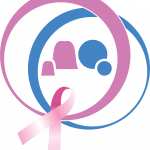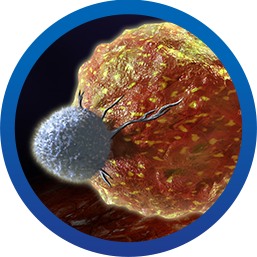Acute myeloid leukemia (AML) is a type of cancer that develops in specific blood-forming cells found in the bone marrow (the spongy center of bones) called “myeloid cells”. Other common terms used for AML are “acute myelogenous leukemia” or “acute myelocytic leukemia”.
Normally, the bone marrow is responsible for producing blood cells. All blood cells begin as immature cells (known as “hematopoietic stem cells”). With time, these immature cells or “hematopoietic stem cells” differentiate to become mature blood cells.
During the first stage, hematopoietic stem cells differentiate into either myeloid or lymphoid stem cells. Myeloid stem cells will eventually give rise to three types of mature cells found in the blood:
- Red blood cells responsible for carrying oxygen
- White blood cells responsible for fighting infections
- Platelets responsible for forming plugs that prevent bleeding at sites of injury to the lining of blood vessels

Illustration courtesy of National Cancer Institute (www.cancer.gov)
In AML, myeloid lineage cells transform into leukemia cells, also known as “myeloblasts”. Unlike the normal myeloid stem cells, myeloblasts (leukemia cells) do not differentiate into mature blood cells.
Instead, they multiply out of control building up in the bone marrow and often end up spilling into the bloodstream where they are called “circulating blasts”. As a result, there is little room for normal blood cells (white cells, red blood cells or platelets) to develop in the bone marrow. This is why it is common for people with AML to have low red blood cells counts ( “anemia”), low white count cell (“neutropenia”) or low platelet count ( “thrombocytopenia”).
Although leukemia cells (myeloblasts) are usually found in the bone marrow or blood, they can sometimes spread to other parts of the body such as the brain or spinal cord, the skin or the gums. Very rarely, leukemia cells can spread to lymph nodes or organs in the body where they form masses, which are called “chloromas”.


